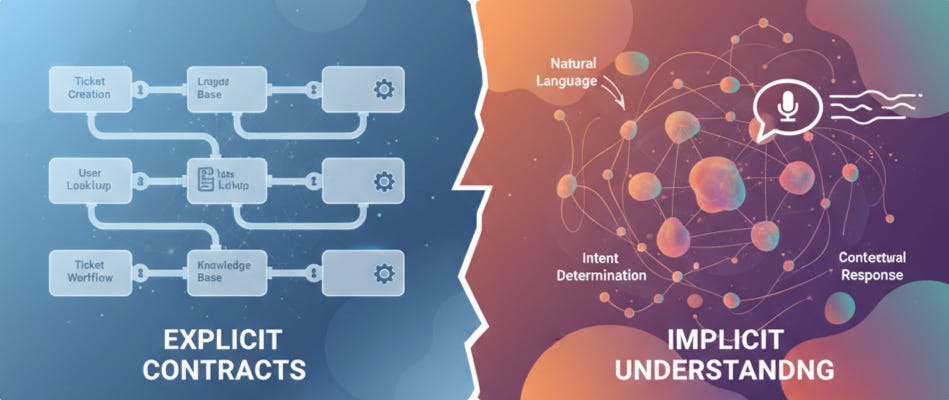
"The technology landscape has shifted beneath our feet. For the past decade, "API-first" was the mantra that guided architectural decisions across the industry. Build robust APIs, enable integrations, create ecosystems, this was the playbook. But in 2025, as AI capabilities become increasingly sophisticated and accessible, CTOs and technology leaders face a new question: should we be AI-first instead? This isn't just a technical question. It's a strategic one that will define competitive positioning, development velocity, and product differentiation for years to come"
"The API-first movement gave us remarkable outcomes. Companies like Stripe, Twilio, and Plaid built entire businesses on the premise that developers want clean, well-documented interfaces to complex functionality. The pattern was clear: abstract complexity behind elegant APIs, enable programmatic access, and watch ecosystems flourish. This approach delivered tangible benefits. Teams could work independently, systems could be swapped without massive rewrites, and third-party integrations became assets rather than liabilities. The ROI was measurable and immediate."
"AI-first architecture is fundamentally different from simply "adding AI features" to existing systems. It means designing systems where AI models are primary decision-makers, orchestrators, and interfaces , not just auxiliary components. Consider what this looks like in practice: In an API-first world, you build a customer support system with endpoints for ticket creation, user lookup, knowledge base queries, and escalation workflows. Each component is precisely defined. Integration requires understanding each endpo"
The technology landscape has shifted as AI capabilities become increasingly sophisticated and accessible in 2025, prompting CTOs and technology leaders to consider AI-first strategies. For the past decade, API-first delivered composability, flexibility, and speed by abstracting complexity behind well-documented interfaces that enabled ecosystems and measurable ROI. Companies such as Stripe, Twilio, and Plaid exemplified that approach, enabling independent teams, system interchangeability, and integrations as assets. AI-first architecture repositions AI models as primary decision-makers, orchestrators, and interfaces rather than auxiliary features. AI-first aims to deliver similar benefits—composability, velocity, and product differentiation—potentially more effectively in the current context.
Read at Medium
Unable to calculate read time
Collection
[
|
...
]